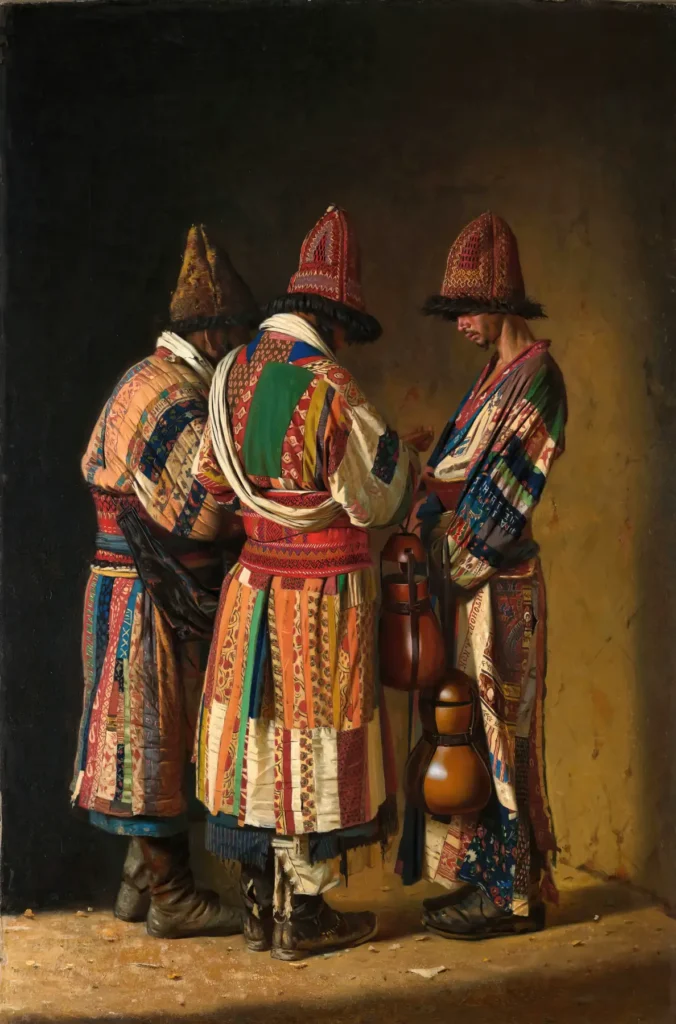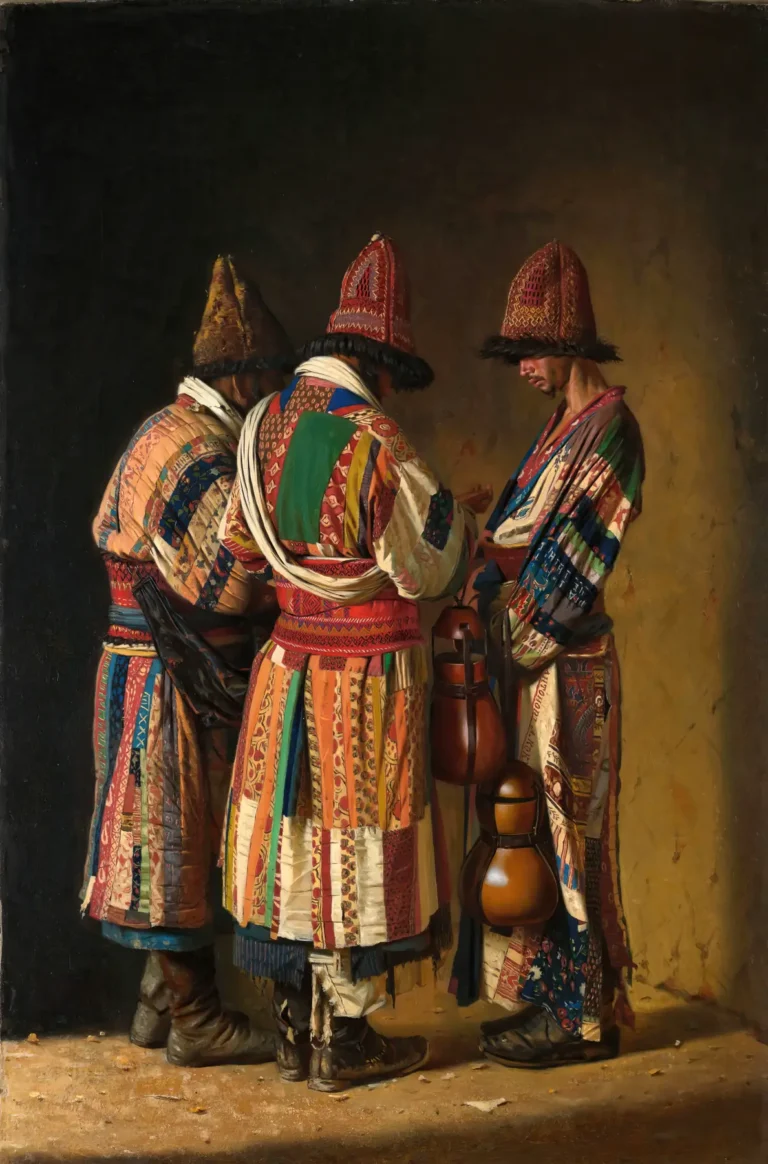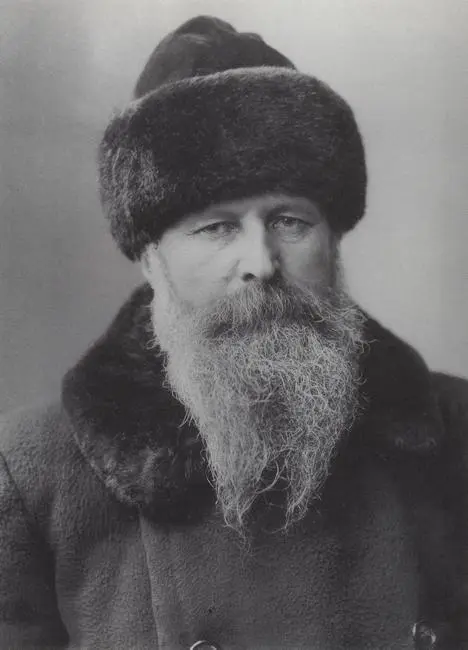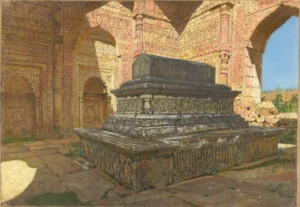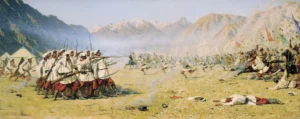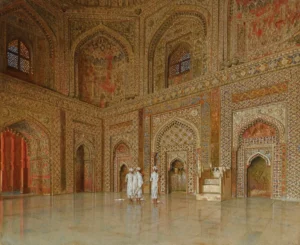Dervishes in Festive Attire (1869-1870)
Created by the renowned Russian artist Vasily Vereshchagin between 1869 and 1870, Dervishes in Festive Attire is a striking painting that celebrates the rich cultural traditions of the dervishes in Tashkent. The artwork, rooted in the Realism style, showcases Vereshchagin's keen observation of the mystical Islamic order's festive attire and their vibrant social gatherings. This piece not only highlights the aesthetics of the region but also reflects Vereshchagin's unique understanding and appreciation of Central Asian culture during his extensive travels.
1869 - 1870
About the Artwork
Vasily Vereshchagin, celebrated for his war art, turned his gaze towards the rich cultural tapestries of Central Asia during his travels in the late 19th century. Dervishes in Festive Attire emerged from his time spent in Tashkent, where the colorful attire of Sufi dervishes captured his imagination and inspired this evocative work. Vereshchagin adeptly combines Realism with a touch of Orientalism, presenting not just a scene, but a vibrant exploration of the dervishes' spiritual practices and communal festivities. Through this painting, he transports viewers into a lively moment, bridging cultural divides and offering a glimpse into the lesser-known aspects of Islamic traditions. The painting remains a testament to his commitment to depicting the authentic experiences and complex identities within the regions he explored.
Did You Know
Vereshchagin is known not only for his war paintings but also for his explorations into various subjects including landscapes and the rituals of different cultures, which he captured with great empathy and detail.
Vereshchagin’s travels in Central Asia significantly shaped his artistic output. His profound experiences among the locals provided him with a unique perspective that he infused into his works, notably showcasing the intricate cultural practices of the region.
The dervishes depicted in this artwork embody an important spiritual and cultural facet of Sufism, representing a dance of ecstasy that brings together devotion and artistic expression, aligning beautifully with Vereshchagin’s penchant for capturing the essence of human experience.




